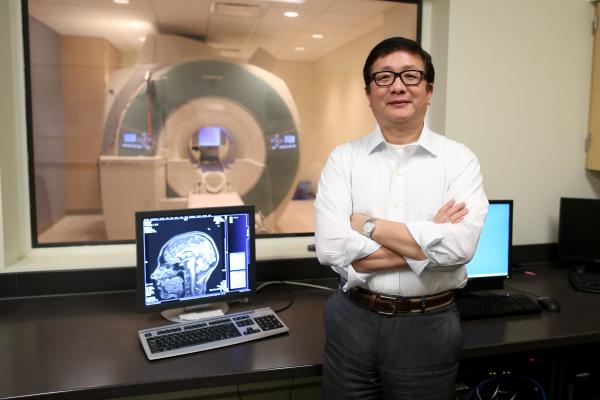CCBBI: The Model in Brain Science

The College of Arts and Sciences’ Center for Cognitive and Behavioral Brain Imaging (CCBBI) is a preeminent, model research-dedicated brain imaging facility, according to the Association for Psychological Science (APS). Established in 2012, the CCBBI’s mission is to create and disseminate knowledge about the brain and mind that engenders transformative discoveries. Located in the basement of the Psychology Building, CCBBI houses a Siemens 3T Prisma magnetic resonance imaging system to carry out both structural and functional imaging studies.
The study of brain functioning and behavior (cognitive neuroscience) is one of the fastest growing fields in psychology and the social and biological sciences more generally. A major contributor to this growth is the development of innovative functional Magnetic Resonance Imaging (fMRI) technology. “The brain is the most complicated structure in the human body,” said Zhong Lin Lu, professor of psychology and CCBBI director.
“The CCBBI is dedicated to understanding and decoding the mind by uniting Ohio State’s diverse and abundant resources across disciplines to address health and well-being across the lifespan.”
The CCBBI has three dozen principal investigators representing 17 diverse research departments across Ohio State, including psychology, business marketing, cardiovascular medicine, electrical and computer engineering, health and rehabilitation sciences, pediatrics, psychiatry, sociology, speech and hearing science, and more. The center houses experts in structural and functional imaging technologies, experimental design, and advanced data analytics techniques.
“CCBBI offers unique opportunities to bring researchers from disparate backgrounds together to conduct impactful, cutting-edge research,” said Lu. “The research topics here are wide-ranging and specific: if you can think or feel it, somebody is probably studying that process using fMRI here at the CCBBI.”
Researchers in the center are exploring the neural basis of facial action recognition, the association between physical activity and improved working memory for individuals with multiple sclerosis (MS), the role of memory, how the immune system affects information processing the brain, and interventions for restoring movement and language after a stroke, among many other precedent-setting studies. CCBBI is a member of the Center of the Concussion Neuroimaging Consortium (CNC) that consists of nine universities. “Our goal is to advance evidence-based medicine for traumatic brain injury (TBI) by establishing best-practices for diagnosis, prognosis and management of head injuries.”
Brain imaging shows us the critical building blocks of the mind and transforms the ways that we understand the processes of perception, memory and decision-making, says Lu. “CCBBI’s brain imaging capabilities allow researchers to go beyond asking the questions to literally seeing the answers.”
@PsychScience names CCBBI is a preeminent, model research-dedicated brain imaging facility #ASCDaily
